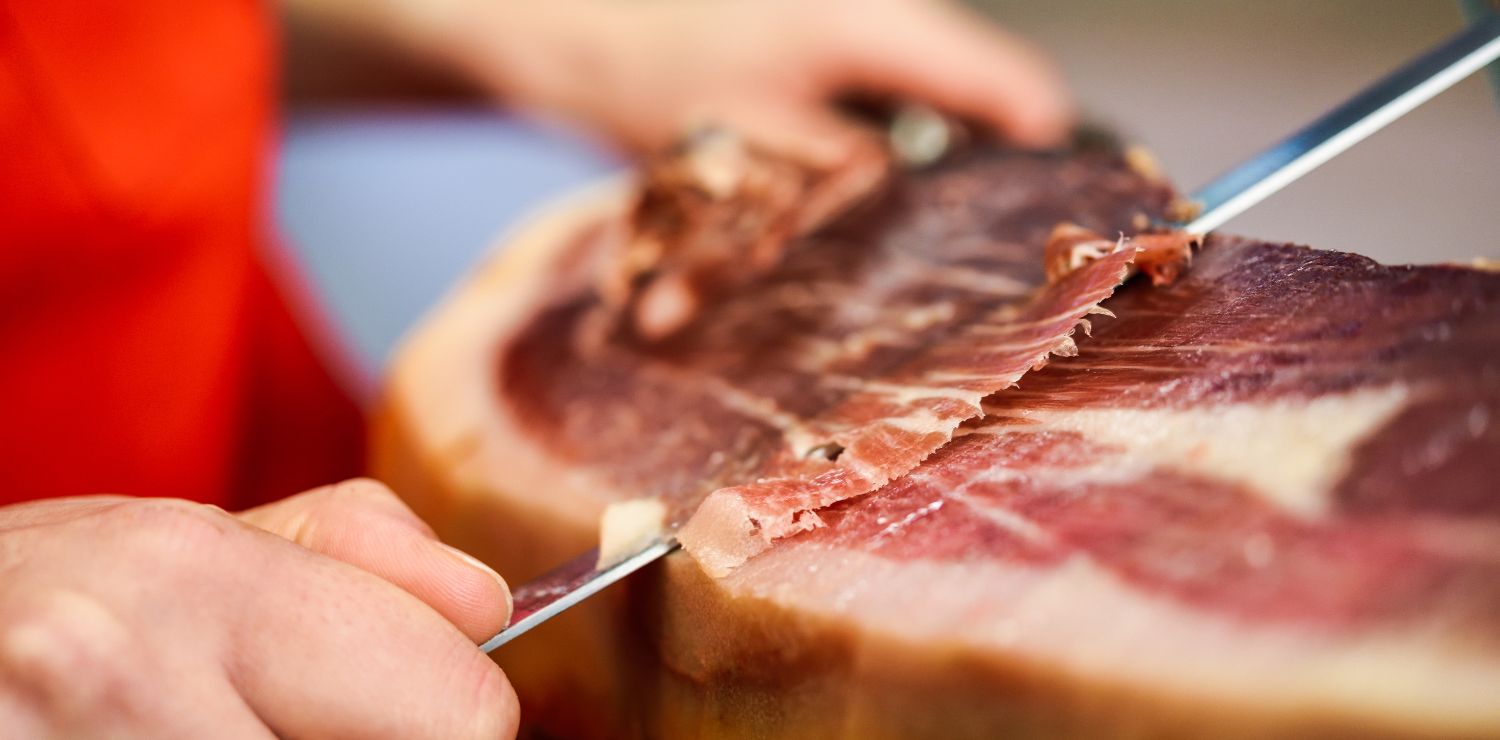Slicing knives are essential tools in any kitchen, whether it is for everyday cooking or professional use. Designed to perform specific tasks, these knives allow you to slice different meats , fish and other foods with unmatched sharpness. In this article, we will explore in detail all the features, types of knives, uses and maintenance of slicing knives, to help you choose the best tool for your culinary needs.
What is a slicing knife?
A slicing knife is a long, thin tool that typically has a blade that is 8 to 12 inches long. Unlike all-purpose chef's knives , slicing knives are specifically designed to cut thin slices of meat, fish, or poultry. The blade is often flexible, allowing for precise slicing without damaging the fibers of the food.
Types of Slicing Knives
There are several types of slicing knives. Each is suited to a particular task:
Ham knife:
This long, narrow knife is perfect for slicing thin strips of ham or other cold meats of all kinds. The length of the blade allows you to cut even slices in one go.
Salmon knife:
Designed for slicing smoked salmon, this knife has a long, very thin blade, often somewhat flexible. This allows you to cut thin slices without crushing the fish, which is a delicate food.
Meat knife:
More versatile, it can be used to slice all kinds of meats after cooking. Its blade is generally less flexible than that of salmon knives, but it is long enough to make clean cuts.
Bread knife:
Technically different, a bread knife can also be considered a slicing knife for breads and cakes. Its serrated blade allows it to cut through thick crusts without crushing the very soft interior.
Features to Look for in a Slicing Knife
When choosing a slicing knife, there are several features to consider:
Blade length:
A longer blade allows you to slice larger pieces of meat or fish in one cut. A length of 20 to 30 cm is ideal for most uses.
Blade material:
Stainless steel blades are commonly used for their corrosion resistance and ease of maintenance. However, carbon steel blades, although requiring more care, provide better cutting quality.
Blade flexibility:
A slightly flexible blade allows it to follow the contours of food, ensuring more even slices. However, a blade that is too flexible can make some cuts more difficult.
Handle :
A good handle should be comfortable to hold and provide a secure grip. Wooden, plastic, or composite handles are commonly used. Make sure the handle is well balanced with the blade.
Balance and weight:
A well-balanced knife with proper weight is easier to handle and reduces fatigue during long slicing sessions.
Using Slicing Knives
Using a slicing knife correctly can greatly improve your cooking skills. Here are some tips to get the most out of your knife:
Sharpening :
Make sure your knife is sharp before using it. A dull knife can tear meat instead of slicing it cleanly.
Hand position :
Hold the knife firmly by the handle and use your other hand to steady the food you are slicing. Your fingers should be curled to avoid cuts.
Cutting technique :
Use long, even strokes to slice food. Avoid sawing or pressing too hard, which could crush the food and affect the quality of the cut.
Cutting surface :
Use a stable and suitable cutting board, preferably made of wood or plastic, to protect the knife blade and keep the food stable.
Caring for Slicing Knives
Proper maintenance of your slicing knife will extend its life and maintain its optimal performance. Here are some maintenance tips:
Cleaning :
Hand wash your knife with warm water and mild soap immediately after use. Avoid the dishwasher, as harsh detergents and heat can damage the blade and handle.
Drying :
Dry your knife immediately after washing it to prevent rust and water spots from forming.
Regular sharpening :
Use a sharpening steel or whetstone to maintain the blade's edge. Sharpen your knife regularly, even if it is not used frequently.
Storage :
Store your knife in a knife block, protective sheath, or on a magnetic bar to prevent blade damage and ensure safety in the kitchen.
Choosing the Right Slicing Knife
Choosing the right slicing knife depends on your specific needs and budget. Here are some things to consider when purchasing:
Budget :
Slicing knives range widely in price, from a few dozen to several hundred dollars. A quality knife is a long-term investment, so it's best to choose a good quality product, even if it means spending a little more.
In-store trial :
If possible, try the knife on in store to check its balance, grip, and comfort. A knife that looks good online may not be as comfortable in real-world use.
Opinions and recommendations :
Check online reviews and ask for recommendations from chefs or friends who are passionate about cooking. Other users' experiences can guide you to the best choice.
Conclusion
Slicing knives are essential tools for anyone looking to improve their culinary skills. By understanding the different features and taking care of your knife, you will be able to achieve perfect slices of meat, fish and much more. Investing in a good slicing knife and taking proper care of it will ensure that you enjoy this valuable tool for many years to come. Whether you are a professional chef or an avid amateur, a quality slicing knife is an essential addition to your kitchen utensil collection.







The Culture of Respect and Courtesy: Understanding People's Behavior in Japan
The Many Uses of the Chef's Knife: An Essential Tool in the Kitchen